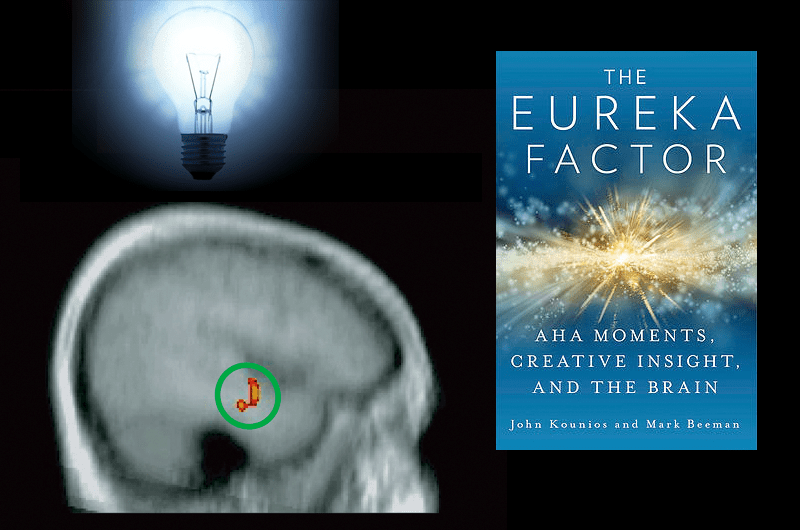How to Harness the Science of Sparking Ideas
 By Rachel Ewing
By Rachel Ewing

- Drexel Selects New, World-Class Life Sciences Building at 3201 Cuthbert Street for Medical Research Operations
- Turn Happy Places and Memories into a Happy New Year
- Breakthrough on Gene Therapy for Hereditary Spastic Paraplegia
- Drexel Environmental Collaboratory Releases Cross-Sector Findings on Severe Weather Recovery Challenges

When you say “aha!” at the spark of a surprising new idea or creative solution to a problem, the idea seems to come out of nowhere. But when such insights pop up without your conscious awareness, how can you train your brain to deliver more of them?
Creative ideas tend to come to people all of a sudden, sometimes in the shower or, famously in the case of Archimedes, who shouted “Eureka!” and ran naked through the streets of ancient Syracuse, in the bath. But, like all ideas, they originate in the brain.
For Drexel psychology professor John Kounios, PhD and his longtime collaborator Mark Beeman, PhD, at Northwestern University, the brain science of “aha! moments” has been a major focus of their careers. In 2004, the pair sprang to international acclaim with their discovery that “aha moments” originate in a key spot of the brain’s right hemisphere just above the right ear—putting to rest the question of whether sudden insight was indeed a separate form of problem-solving from more deliberate analytic processes. For the next decade, they’ve continued to refine their studies of how creativity, especially sudden insight, works in the brain and in practice.
Now, the two have co-authored a new book bringing that science to life and offering a comprehensive picture of the state of scientific knowledge about insight: “The Eureka Factor: Aha Moments, Creative Insight, and the Brain” (Random House, 2015). It’s the first book about creativity that tells a complete and faithful story of the neuroscience written by the actual scientists who made the discoveries.
The book is packed with anecdotes about creative insights—from character design at Disney Pixar to a concert promoter tasked with pleasing Elvis Presley—taking each story as an object lesson in the ways creativity works in the brain, according to the latest research.
The book also highlights numerous examples and recommendations of techniques to improve creativity—but, Kounios notes, such recommendations must be used with care. Factors including sleep, mood, motivation and working environment can all affect insight and can be modified to inspire more creativity, if handled with appropriate knowledge of what to do.
“There are strategies to be more creative, but you have to understand the process in the brain to use them correctly,” said Kounios, who directs Drexel’s doctoral program in applied cognitive and brain sciences in the College of Arts and Sciences. “Otherwise, the strategy can have opposite of your intended results.”
For example, Kounios noted that a positive mood often enhances creativity—but not if a person is perpetually sunny. “Creativity requires multiple perspectives, so you need something to jar you out of that state of mind, even if it happens to be sad.”
“The Eureka Factor” is available for preorder and will be released on April 14, 2015. For links to preorder, visit http://www.eurekafactorbook.com/.
| This is Not a Creativity Checklist |
|---|
|
These tips can help you be more creative (but only if you understand the science of how to apply them correctly):
|
In This Article
Contact
Drexel News is produced by
University Marketing and Communications.